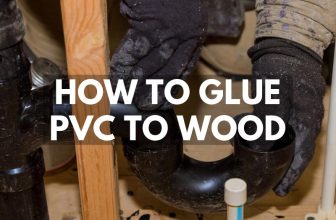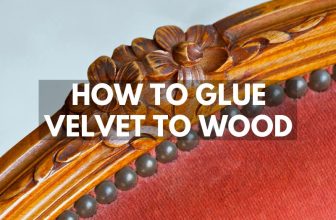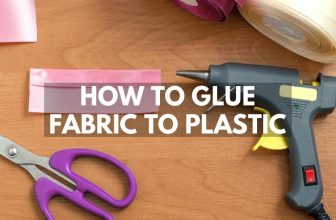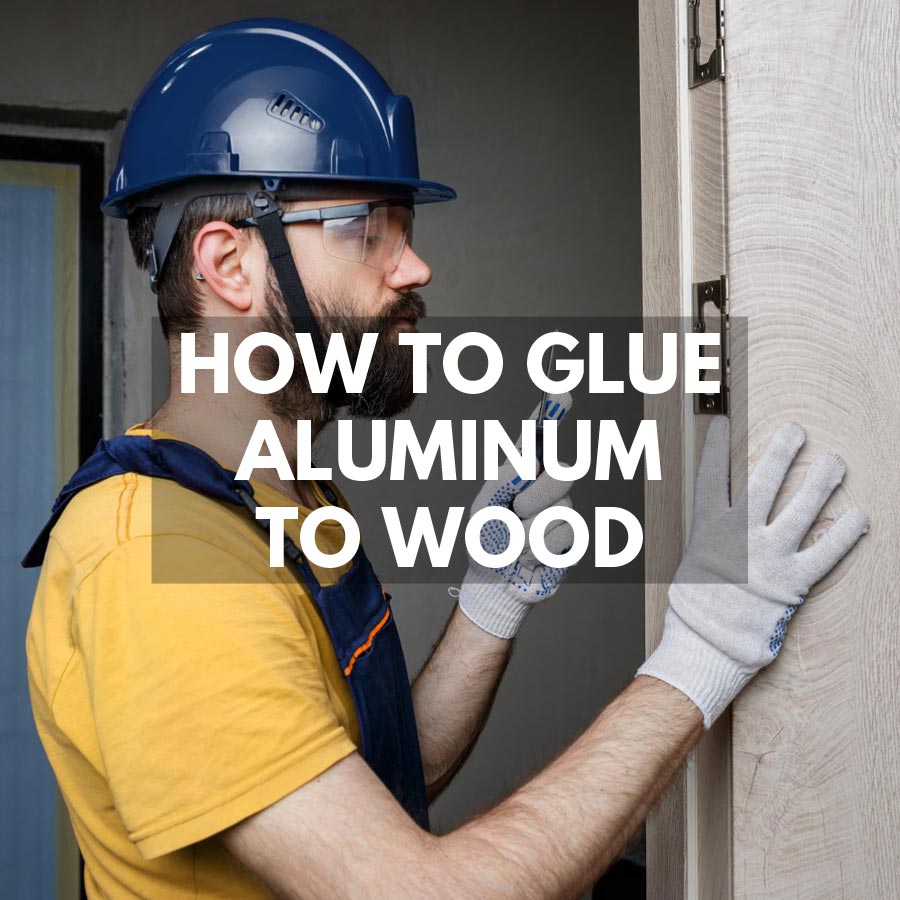
How to Glue Aluminum to Wood
The top choices for gluing aluminum to wood include superglue, epoxy, and polyurethane. To use one of these adhesives, it’s vital to know which ones are better for time limitations and which are better for long-term adhesion.
Each of these adhesives is well suited for gluing aluminum to wood, but there will be minor preparations to help keep them glued together. With that in mind, each of these is also easy to apply using the recommendations found here. We do have a guide to metal glues and the best adhesives for brass to wood which might also be helpful for you.
There may also be a preference for structural flexing that will help determine which adhesive is best recommended. One of these adhesives will suit the needs for aluminum to wood based on what properties these adhesives can offer.
What Glue Can You Use for Aluminum to Wood?
You can use most glues to stick aluminum ad good together but some work better than others. So which works best? Well here are our top 3 choices for general fixings of alloy and timber:
Superglue
One of the fastest methods to adhere aluminum to wood is by using super glue. Since this adhesion is nearly instant, there is very little time that is spent applying many pieces of aluminum to wood without needing to wait for a post-cure. It’s always best to allow super glue to complete its curing process as it sets up. The overall usage of super glue is better for smaller pieces as larger pieces will be trickier to glue down.
Superglue does need simple preparation so aluminum pieces will have a better grip. Wooden surfaces also need to have minor preparation if they are porous and lightweight. Super glue can also be released and dissolved if aluminum pieces need to be adjusted if the piece wasn’t aligned correctly.
Epoxy Adhesive
In general, any kind of 2-part epoxy adhesive is perfect for gluing aluminum to wood. There are many brands of epoxy adhesive that all have different setting times, however, longer setting epoxies will have better adhesion in the long run. There is little preparation that is needed to prep aluminum and wood and may require clamping depending on the circumstances.
If there are pieces that require slight flexing, it will be better to choose a semi-flexible epoxy so the epoxy doesn’t crack under flexing conditions.
Polyurethane Adhesive
One of the unique abilities of polyurethane adhesive is that it provides a flexible bond between aluminum and wood surfaces. This is an excellent long-term bond that is recommended for large or small aluminum pieces that are glued to wood surfaces. There is little preparation and clamping needed to get the right amount of adhesion but is better suited for long-term gluing applications.
This adhesive is a one-part glue that is water sensitive and will react faster if there is any moisture present in wooden pieces.
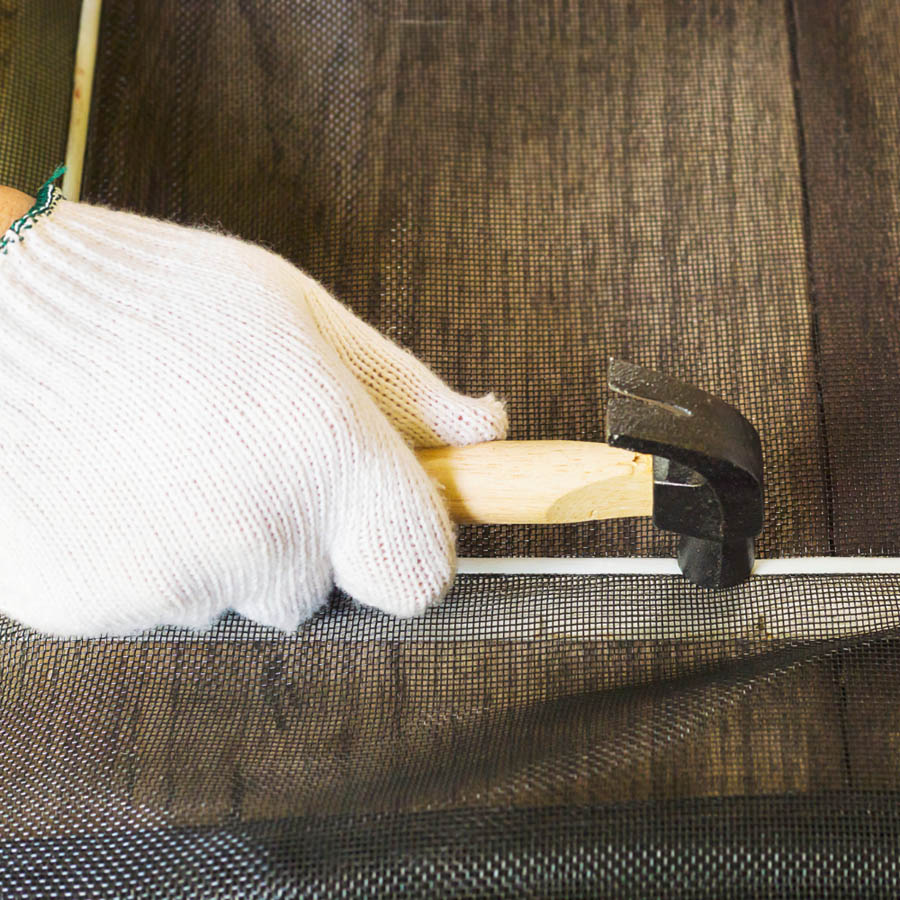
How to Prepare Aluminum to Wood Before Gluing
The best way to prepare wooden surfaces before gluing aluminum to them is to make sure these surfaces are lightly sanded using 250 to 500-grit sandpaper. Many wood surfaces can be extremely porous due to their grain and may soak up liquid-like adhesives such as super glue. This is why choosing gel-based super glue may work better for lighter and lower-density wood.
Aluminum needs to be scuffed up with 500-grit sandpaper to get better adhesion on the gluing surface. Both surfaces need to lay as flat as possible, however, it is possible to glue slightly curved surfaces if aluminum pieces are pre-bent before being glued down to curved wood sections.
How to Apply Glue for Aluminum to Wood
Super glue is applied from a small bottle and is easier to manage if the mixture is gel-based since liquid versions may flow or soak into wood surfaces too easily. Polyurethane and epoxy resin is easier to apply using a pop stick or plastic scraper. Super glue is better to apply in a thin layer onto wood surfaces and allowed to dry before adding aluminum pieces. There is also the need to use spring-loaded clamps on larger pieces that are glued on vertical surfaces.
Clamps or masking tape is used to temporarily hold pieces that only use polyurethane or epoxy due to the risk of pieces that can migrate or slide around while curing. Only a thin layer of glue is needed when applying glue onto wood or aluminum surfaces to get the best results.
How to Cure Aluminum to Wood Glue
The only exception to the glues used for aluminum to wood is super glue since the adhesion is instant after a few seconds. Polyurethane and epoxy adhesive require a curing time and post-cure that is best when they’re allowed 24 hours to completely cure. Polyurethane adhesive will cure faster when moisture is introduced which is a plus for speedy curing times but not always good for wood surfaces.
Placing an item in a warm room during the curing stage for polyurethane and epoxy will speed up the curing time. Colder rooms will inhibit the cure and aren’t recommended for epoxy resin.
Which Is the Best Glue to Use?
The best glue for making speedy adhesion is certainly super glue but isn’t always good for long-term adhesion. Super glue is terrible for flexible sections and can pop off at the slightest bend. The best glue for long-term adhesion is polyurethane glue and is excellent for pieces that bend such as airplane wings or ship masts. Epoxy is a great choice but needs a full 24 hours to ensure the final strength after its cured.
Both polyurethane and epoxy are best when there is plenty of time to allow the curing times to occur. This may be sped up if the room is warmer and can cure in less than 12 hours in the right conditions.







